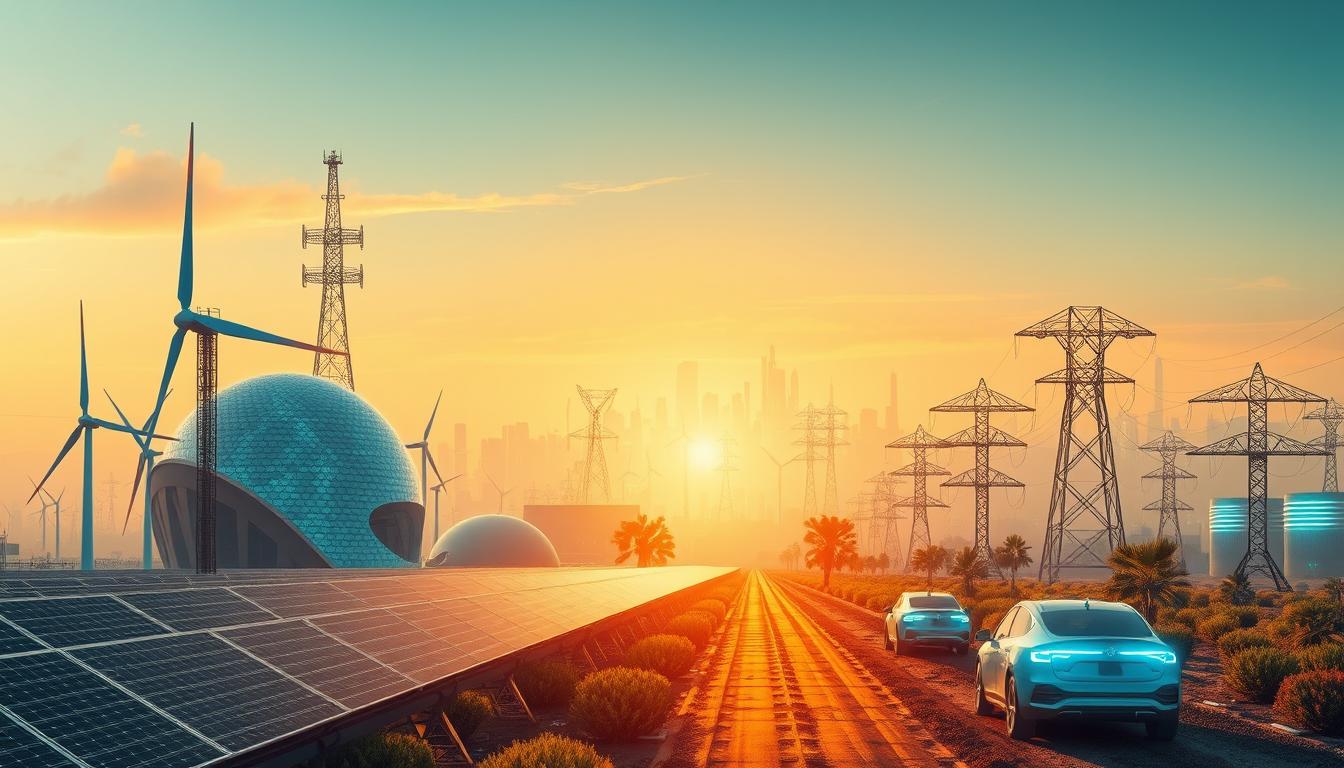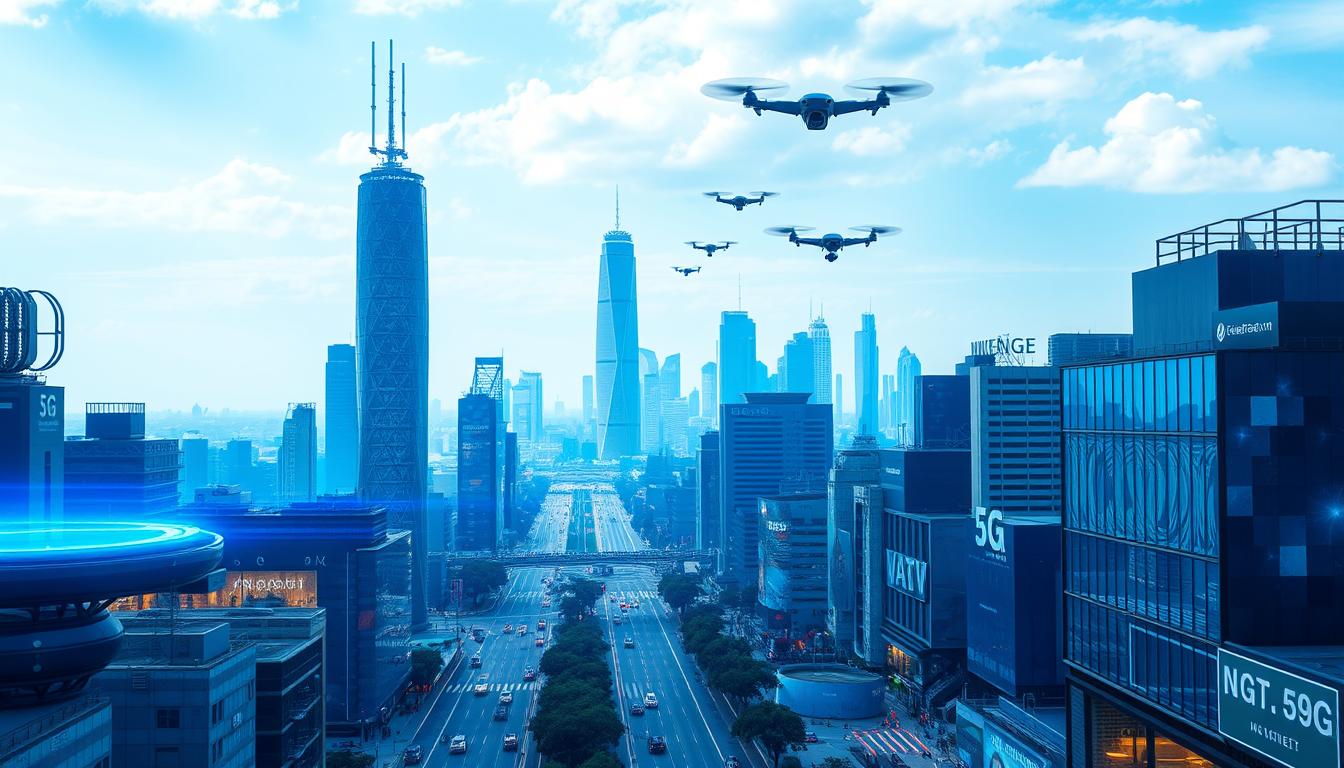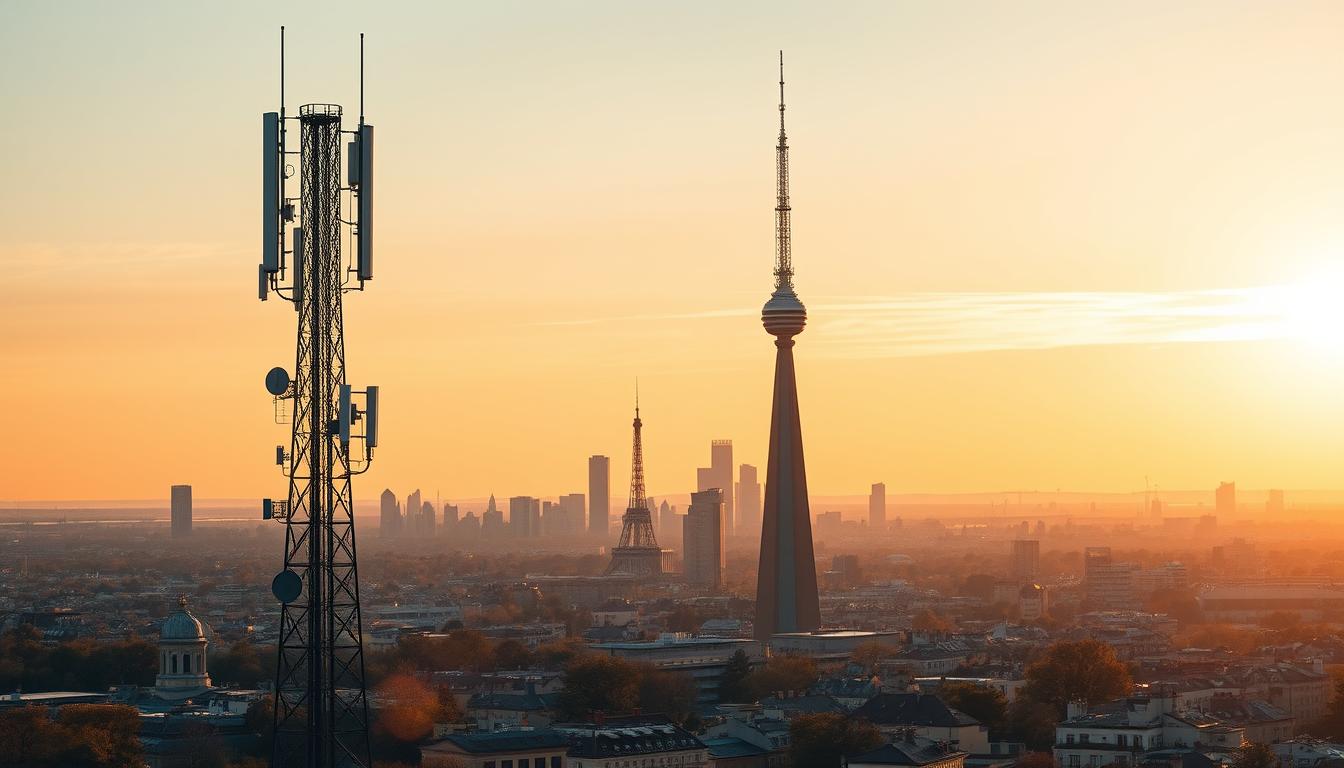5G vs. 4G: major advances in France
France welcomes the next generation of mobile networks, 5G, marking a major advance on 4G. This technology promises exceptional performance, with significantly higher data rates and reduced latency. By 2023, the number of active 5G SIM cards in France had exploded by 64%, reaching around 5 million users.
This technological evolution opens up new possibilities for consumers and businesses alike. Syscom-Prorep, a specialist in the integration of industrial electronic and IT solutions, is playing a key role in the adoption of these advanced technologies in the French industrial sector.
5G in France uses a variety of frequency bands, including 3.5 GHz and 26 GHz, offering a balance between coverage and capacity. This technology can connect up to 100 times more devices per zone than 4G. What's more, it reduces latency to just 1 ms, compared with 200 ms for 4G.
Key points to remember
- 64% increase in active 5G SIM cards in France by 2023
- Latency reduced from 200 ms (4G) to 1 ms (5G)
- 100 times the connection capacity of 4G
- Use of new frequency bands (3.5 GHz, 26 GHz)
- Deployment of 14,223 5G antennas in France by April 2021
The evolution of mobile networks: from 3G to 5G
Mobile networks have undergone a rapid transformation, evolving from 3G to 5G. This evolution has introduced faster throughput and increased performance at every stage.
The 3G legacy
3G ushered in the age of smartphones. It enabled users to surf the web, send e-mails and download applications. Speeds reached up to 2 Mbps.
The transition to 4G LTE
4G LTE has transformed mobile usage, offering theoretical speeds of 1 Gbps. In practice, it delivered speeds of 100 Mbps to 1 Gbps under optimal conditions. Latency was significantly reduced, enhancing the user experience.
The emergence of 5G
5G ushers in a new era of spectacular performance. It promises theoretical speeds of up to 20 Gb/s, a 20-fold improvement on 4G. In reality, users can expect speeds of 150 Mbps to 1 Gbps. Latency is reduced to 1-10 ms, offering unprecedented responsiveness.
This evolution is enabling the emergence of innovative applications, such as the large-scale Internet of Things (IoT). Connectivity solutions such as LoRa, GNSS, Wi-Fi and Bluetooth are adapting to exploit these technological advances.
What does 5g offer compared with 4g?
5G marks a real technological advance on 4G. It offers significantly improved performance, particularly in terms of speed, latency reduction and network capacity. With theoretical speeds of up to 20 Gb/s, 5G promises a connection up to 20 times faster than 4G.
Reducing latency is a major advantage of 5G. The aim is to achieve a latency of less than 1 ms, compared with 60-98 ms for 4G. This improvement paves the way for time-sensitive applications such as telemedicine and autonomous driving.
The increased network capacity of 5G enables a large number of devices to be connected simultaneously. This feature is essential for the development of the Internet of Things (IoT) and smart cities.
- Connection speeds up to 10 times faster than 4G
- Reduced latency for improved responsiveness
- Massive connectivity for the IoT
- Better coverage in dense urban areas
These technological advances enable companies like Syscom-Prorep to offer innovative customized services. The assembly of industrial PCs and the customization of display solutions can now fully exploit the capabilities of 5G for advanced industrial applications.
New frequencies and 5G technology
5G represents a major turning point in the evolution of technology. It relies on unprecedented frequencies to boost performance. This opens the way to unprecedented innovations.
Frequency bands used
Arcep has allocated the 3.5 GHz band to operators for 5G. This allocation enables higher data rates and increased network capacity. The 26 GHz band is also being exploited, promising even more advanced applications.
Network coverage and reach
5G is divided into three bands: low, medium and high. Each band offers unique advantages in terms of range and capacity. Today, 30% of the world's population benefits from 5G. Coverage is expected to reach 85% by 2028.
Technical infrastructure
Active antennas and small cells are being deployed to optimize the network. Autonomous 5G, expected in 2022, promises improved network management and near-instantaneous interactivity. These advances herald new applications in healthcare, agriculture and smart cities.
- Download speed up to 20 Gbps
- Ultra-low millisecond latency
- Management capacity of 1 million devices per km².
5G network performance and capacity
5G radically transforms our interaction with the digital world. It dramatically improves communication and interaction with connected devices. This revolutionary technology is bringing major advances.
Data speed and throughput
5G surpasses 4G in transmission speed. It offers theoretical downstream speeds of up to 20 Gbit/s, 20 times faster. In practice, this means faster downloads: a 4 GB HD movie can be downloaded in 10 seconds, compared with 3 minutes with 4G.
Latency and responsiveness
5G reduces latency to just 1 millisecond, compared with 30 milliseconds in 4G. This reduction in latency paves the way for new real-time applications. These include virtual reality and autonomous driving.
Simultaneous connection capacity
5G excels in managing many simultaneous connections. It can connect up to a million devices per square kilometer. This facilitates the Internet of Things (IoT) and the development of smart cities.
5G is now available in all French cities with more than 100,000 inhabitants and in more than 10,000 communes. It uses different frequency bands to improve coverage and performance. This offers a far superior user experience to 4G.
The Internet of Things (IoT) revolution
5G is revolutionizing the Internet of Things (IoT), paving the way for unprecedented future technologies. With speeds of up to 20 Gbit/s, 20 times faster than 4G, 5G is propelling IoT data efficiency to new heights. This breakthrough enables massive connectivity, essential for the large-scale deployment of connected objects.
5G innovations reduce latency to less than a millisecond, compared with 15 ms for 4G. This increased responsiveness is revolutionizing real-time IoT applications, particularly in industrial automation and high-definition video surveillance. What's more, 5G supports a significantly higher number of simultaneously connected devices, meeting the growing needs of the IoT.
Energy efficiency is another major advantage of 5G for the IoT. 5G antennas consume 2-3 times less energy than 4G antennas, extending the battery life of IoT devices by up to 10-15 years. This energy saving, coupled with technologies such as Massive MIMO and Beamforming, improves the stability and coverage of IoT connections.
Companies like Syscom-Prorep play a crucial role in this revolution. Specializing in the integration of industrial electronics and IT solutions, Syscom-Prorep helps its customers exploit the full potential of 5G innovations to optimize their processes and increase their operational efficiency.
Industrial and professional applications
5G is revolutionizing the industrial and professional world. It offers enhanced performance and unprecedented connection capacity. This technology is radically transforming manufacturing processes and optimizing production chains.
Smart Manufacturing and Industry 4.0
In the manufacturing sector, 5G enables the increased use of sensors. These sensors monitor production lines. This enhances automation and predictive maintenance.
Massive connection density reaches 1 million devices per square kilometer. This supports large-scale industrial IoT applications.

Business solutions
Businesses are benefiting from numerous innovations thanks to 5G:
- Real-time inventory tracking for optimized supply chain management
- Improved logistics through precise location tracking
- Advanced automation and robot fleets to overcome labor shortages
- Integrating augmented reality and drones for quality control
Telecommuting and remote collaboration
5G is also transforming remote working. Its low latency and high data rates make telemedicine more efficient. Virtual reality applications facilitate training and maintenance in industrial environments.
This enhanced connectivity opens up new possibilities for remote collaboration. It redefines traditional ways of working.
Impact on users' daily lives
5G is revolutionizing our everyday lives with faster speeds and reduced latency. It's transforming the way we communicate, entertain ourselves and use connected services. This revolutionary technology is changing the way we live.
Streaming and entertainment
Downloading an HD movie is reduced from minutes to seconds. Music fans can now download entire albums in the blink of an eye. This increased speed enriches the streaming experience, offering superior picture and sound quality without interruptions.
Mobile communication
5G dramatically improves video calls. Reduced latency enables smooth, natural conversations, as if the other party were in the same room. Virtual meetings gain in quality, facilitating telecommuting and remote collaboration.
Connected services
5G boosts the Internet of Things. It enables a large number of devices to be connected simultaneously, paving the way for more responsive smart homes. In public spaces, it fosters the development of connected cities, optimizing traffic and resource management.
This technological revolution extends to crucial areas such as telemedicine. Remote consultations are becoming more precise and reliable. Autonomous cars also benefit from this advance, promising safer, more efficient travel.
Environmental and energy issues
The new generation of mobile networks raises crucial questions about environmental and energy impact. The deployment of 5G presents both challenges and opportunities for more efficient resource management.
According to a Huawei study, a 5G antenna consumes up to 3.5 times more energy than a 4G antenna at maximum power. However, it offers 10 times greater throughput. This gain in efficiency could reduce overall energy consumption in the long term.

The French High Council for the Climate estimates that the carbon impact of 5G could add between 2.7 and 6.7 million tonnes of CO2 equivalent by 2030. Innovative solutions are emerging to meet this challenge. Syscom-Prorep offers forward-looking technologies for optimizing energy management, such as lithium batteries and DC/DC converters.
ARCEP has launched initiatives to collect environmental data from operators. These efforts aim to integrate ecological considerations into the development of 5G infrastructures. The aim is to reconcile technological progress and respect for the environment for this new generation of mobile networks.
Infrastructure transition in France
The rollout of 5G in France represents a major step forward in the evolution of mobile networks. This innovative technology offers significant improvements over 4G, including increased network capacity.
National deployment
The commercial launch of 5G in France took place at the end of 2020. Operators Bouygues Telecom, Free Mobile, Orange and SFR each received a 50 MHz block in the 3.5 GHz band. This band is particularly suited to boosting network capacity in densely populated urban areas.
Coverage zones
5G is being rolled out gradually, with priority given to urban areas. Large conurbations are the first to benefit from this technology. By contrast, rural areas are encountering difficulties due to coverage limitations in the 3.5 GHz band.
Implementation schedule
The rollout schedule is highly ambitious. By the end of 2022, each operator must have activated 3,000 5G sites. This figure should rise to 8,000 by the end of 2024 and 10,500 by the end of 2025. The ultimate goal is to cover 100% of existing sites with 5G by 2030.
This transition to 5G promises to bring greater network capacity than 4G. It paves the way for new applications and services, transforming the way we communicate and work.
Future prospects and developments
The horizon of future technologies extends far beyond 5G. Current 5G innovations are laying the foundations for even more impressive advances in telecommunications.
Evolution towards 6G
6G, the next generation of mobile networks, promises extraordinary performance. Current research is aiming for connection speeds 100 times faster than 5G. Commercial deployment is scheduled for around 2030.

The PEPR program supports ten major research projects to develop this technology. A key objective is to reduce energy consumption, thereby addressing environmental challenges.
Technological innovations to come
The technologies of the future are not limited to speed. They aim to transform various sectors such as energy, healthcare and transport. In France, the 5G market is expected to reach 15 billion euros by 2025, creating 20,000 new jobs.
Companies like Syscom-Prorep, specializing in connectivity solutions, are gearing up to integrate these innovations. Their expertise in LoRa, GNSS, Wi-Fi and Bluetooth will be crucial in meeting the evolving needs of the industry in this era of digital transformation.
Conclusion
5G represents a revolution in the era of mobile networks in France. It offers significant improvements over 4G, with speeds up to 10 times faster and latency reduced to 1 millisecond. These advances pave the way for innovative applications in a wide range of sectors.
The rollout of 5G in France is gathering pace. As of December 1, 2022, more than 60,000 operational 5G sites exist, distributed among the main operators. The government aims to cover two-thirds of the French population by 2025, with a focus on rural areas.
5G enables increased capacity to support up to a million connected devices per km². It offers speeds needed for the development of emerging technologies, such as autonomous vehicles and telemedicine. For more information on 5G solutions, contact Syscom-Prorep on +33 1 60 86 80 04 or by email at contact@syscom-prorep.com.
FAQ
What are the main differences between 4G and 5G?
5G is characterized by higher throughput, reduced latency and increased network capacity. This technological breakthrough is enabling the emergence of new applications in industry and the Internet of Things. It offers enhanced performance, essential for many sectors.
How does 5G improve connection speeds?
5G benefits from new frequencies and technologies, enabling higher speeds than 4G. These improvements mean faster downloads and streaming. They also guarantee better quality for data-intensive applications.
What is 5G's reduced latency and why is it important?
Reduced latency means shorter data response times. This factor is crucial for applications requiring immediate responsiveness. This includes virtual reality, autonomous vehicles and remote surgery.
How will 5G impact the Internet of Things (IoT)?
5G facilitates massive connectivity and more complex IoT applications. It supports a large number of connected devices simultaneously. This paves the way for smart cities and more advanced industrial automation.
What are the benefits of 5G for industry?
5G boosts Smart Manufacturing and Industry 4.0 by connecting numerous sensors and machines in real time. This promotes better automation, more efficient predictive maintenance and increased flexibility in production.
How will 5G transform users' daily lives?
5G will dramatically improve user experience in a variety of areas. It will make video streaming, online gaming, augmented reality and connected services more fluid. It will also pave the way for new uses, such as advanced telemedicine and autonomous vehicles.
What are the environmental issues involved in deploying 5G?
The rollout of 5G raises concerns about the energy consumption of infrastructure and devices. However, 5G offers opportunities for energy optimization. It could contribute to more sustainable solutions in various sectors.
How is the transition to 5G going in France?
The transition in France follows a national rollout plan with priority areas. The process is gradual, aimed at improving network capacity while ensuring coexistence with existing 4G infrastructures.
What does the future hold after 5G?
Research into 6G and other technological innovations continues. These developments promise even more advanced capabilities in terms of speed, latency and applications. They pave the way for new possibilities in connectivity and computing.

